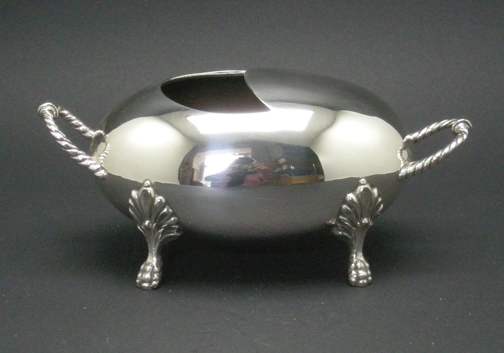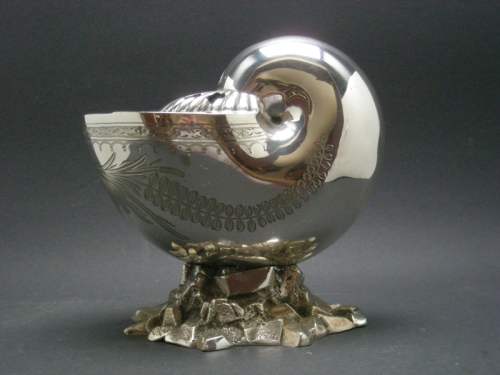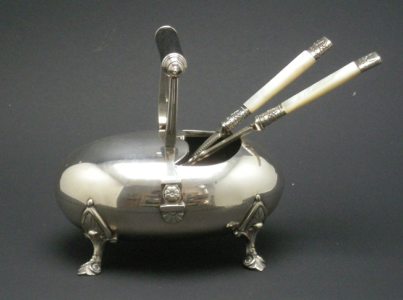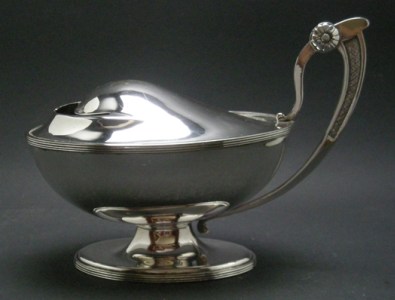by Christian M.
Baur
(click on photos to enlarge image)
SPOON WARMERS, AN OFTEN INCORRECTLY DESCRIBED OBJECT
Very difficult to trace, it is an invention of the late
Victorian period from about c1870. In ancient auction results
(The Values of Old English Silver and Sheffield Plate, London,
1906), this item is never appearing and so we can assume that it
was either rare or everybody wanted to keep it.
HISTORICAL ORIGIN
At a time when the kitchens were generally set far
from dining rooms, it was of great importance that
food be kept warm while being brought to the rarely
heated dining rooms. Apart from the large variety of
dishes that had hot water compartments so the
enchanting spoon warmers were invented. Filled also
with hot water in the kitchen, they were brought to
the table along with the serving spoon(s) which were
stored in them until being used and so kept warm.
CONSTRUCTION
They have always something in common, namely the
fact that they stand on feet. Because of this we can
assume that they were filled with hot water. The
feet would prevent damage to the precious table
surface.
on the right: silverplate spoonwarmer, Albert
J. Beardshaw, Sheffield about 1875
|
 |
 |
TODAY'S APPEARANCE
They were never part of a mass production and so
they rarely appear today. They are absolutely
collectable and highly sought after. I think they
were probably not produced in Sterling Silver.
In my 20 years of collecting I only found spoon
warmers, manufactured in the process of Electro
Plating. They appear today in various shapes and
themes.
Today, we enjoy playful designs like various shells
sitting on rocks, oval egg-shaped forms placed on
feet sometimes with side or top handles, small boats
or redesigned sauceboats and last but not least
everyday's objects transformed to the purpose.
on the left: silverplate spoonwarmer, Walker
& Hall, Sheffield about 1885
|
With the beginning of the 20th Century (up until WWI) and
the associated progress in relation to heated rooms these
decorative and functional helpers slowly fell out of fashion.
The main production period in my view was the last quarter of
the 19th Century.

William Hutton & Sons,
Sheffield about 1849 (MP Mark)
|

William Hutton & Sons,
Sheffield about 1860
|
Christian M. Baur
- 2012 -
Christian M. Baur has a lifelong interest on
British silverplate. He is the author and editor of
Makers' Marks on British Silver Plated Wares
(detailed information about his book at
http://www.britishsilverplatemarks.com)
|
|
|

